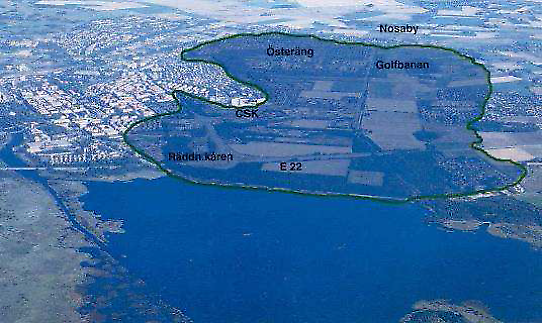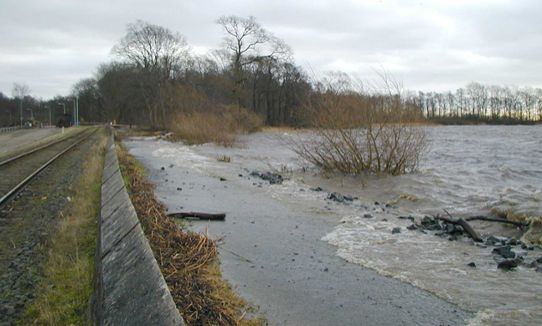Kristianstad lies beside Lake Hammarsjön in north-eastern Skåne province, with the River Helge running alongside. The River Helge flows through Lake Hammarsjön and eventually out at Hanöbukten Bay south of Åhus. The lowest point in Sweden is just outside Kristianstad, at 2.41 metres below sea level. Today, 60% of central Kristianstad lies on what was formerly the seabed, as part of Lake Hammarsjön was drained in the 19th century. The resulting embankment, known as Hammarslundsvallen, can be seen as a dam in reverse – rather than retaining the water inside the dam its function is to keep the water out. The city’s location means that it is exposed in extreme weather conditions, a situation which will of course be exacerbated by climate change.

The embankment project
In 2002, Hammarslundsvallen was almost breached due to a high tide, when water levels were measured at 2.15 metres above the mean water level. Emergency action had to be taken to protect the embankment. There was no damage to any buildings, but large parts of Tivoli Park, adjacent to River Helge, were flooded.

If the embankment had been breached, thousands of people would have been affected and several important public services put out of action, including the main hospital, the water treatment plant and the emergency station. To avoid a repetition of this near catastrophe, the municipality decided to reinforce Hammarslundsvallen and at the same time construct new embankments to protect other parts of the city from the River Helge’s high tides.
Rain that falls inside the embankments does not have any natural drainage, and so in 2014, 5 pumping stations were installed to pump out rainwater in the future.
The project is expected to be completed by 2025. In all, 10 km of embankments are to be constructed and a further pumping station installed, making a total of 6 pumping stations. By 2014 the project had reached the half-way point.
The embankments are in the form of earth and filter dikes, with an inner core of moraine which will allow a small amount of water to run through. These are reinforced with berms on the landward side that increase the strength of the dikes. This means Kristianstad should be protected against flooding both now and in the future irrespective of climate.
Not all parts of the city will be protected, however; flooded in 2002, Tivoli Park will have no new flood defences and will be allowed to flood again in the future.
Effects of the action taken
+ Long-term protection against flooding for the city
+ Protection of important public services
+ Kristianstad can remain in its current location
+ Security for the residents of the city
- Costly process
- Many conflicting interests
- Requires constant monitoring as the embankments must never be allowed to be breached
Financing
The whole project is expected to cost about SEK 300 million, with 60% government funding. By 2014 the project had cost SEK 127 million.
Challenges and experiences
Hammarslundsvallen has been a challenge for the city. When it was close to giving way in 2002, a berm of rocks was put in place behind the embankment to protect it. Construction of a new embankment inside the old one started in 2003. At the time, it was noted that an unanticipated imbalance in the load on the embankment caused the pressure point to constantly shift sideways. This will be addressed towards the end of the project so that the pressure point remains static.
As this is such an extensive project, it will have far-reaching implications. One challenge on the horizon is how to accommodate the multiple interests that will arise when the flood defence work affects infrastructure and non-municipal land. This may well mean that the project becomes a long drawn out process.
More examples of climate adaptation
This is one of many examples of climate adaptation. There are more in the collection of ideas being built up by the Swedish National Knowledge Centre for Climate Change Adaptation at the Swedish Meteorological and Hydrological Institute (SMHI). The collection of examples has the aim of sharing experiences and providing ideas to everyone who works with climate adaptation. Examples describe concrete measures and challenges in several subject areas. They show how different actors have worked to adapt their activities to the climate changes that are already being noticed today and those that we cannot prevent in the future.